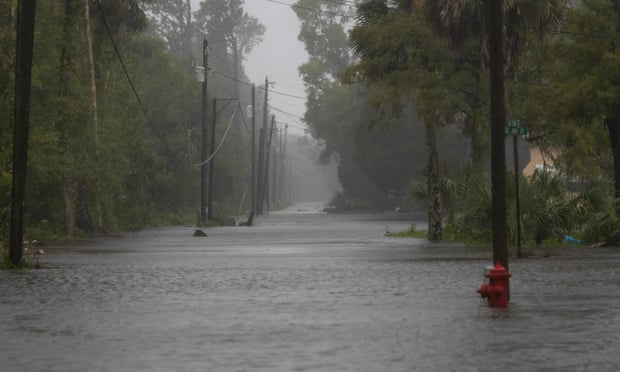By Tracy Bachtell, senior vice president of Paul Davis Restoration Inc.
As the oil disaster in the Gulf of Mexico continues to grow, the onset of hurricane season brings additional concerns regarding the potential for catastrophic damage from storm surges packed with oil-contaminated water along with the flooding of hundreds of homes and businesses along the Gulf coast.
All of the hurricane predictions are forecasting a very active season in 2010. Even a category 1 or 2 storm, which can send a 5 to 10 foot dome of water inland, flooding miles of coastline, would cause significant damage. The aftermath of such an event will create a significant challenge for first responders who are relied upon to cleanup and rebuild areas affected by these types of disasters.
By itself, oil contaminated water can cause significant damage to most structures it comes in contact with. What further complicates the cleanup effort is the fact that for months since the spill happened, emergency responders have been spreading chemical dispersants by air and water over large portions of the Gulf to help break up the oil. These chemicals are difficult to separate from water and can significantly increase the cleanup cost if water affected by these dispersants is deposited inland by wind-driven rain or storm surge.
Insurance restoration contractors are often the first key first responders and will be positioned at the front lines to help clean up and restore damaged structures and contents should this scenario come to fruition. Professionals in this industry will look to the insurance industry and The Institute of Inspection, Cleaning and Restoration Certification (IICRC), and EPA for guidance about oil contaminated water issues.
Cleaning methods
It is important to note that oil leaking into the Gulf is unrefined, crude oil. The IICRC puts oil in its "worst" classification of the three types of water that causes property damage. In their definition, Category 3 is described as "black water". This class of water is highly contaminated and could cause death or serious illness if consumed by humans. The methods required for cleanup and restoration of property affected by Category 3 water are more intensive and require extreme care and precautions.
Most building materials and contents affected by Category 3 water are considered non-restorable and must be removed and disposed of. For cleaning restorable and other surfaces, there are two basic classes of chemicals to consider - emulsifying and non-emulsifying cleaners.
- Emulsifying cleaners make the oil mostly water soluble, which improves cleaning ability and provides easier rinsing. However, by creating an oil water emulsion this will require consideration for any special handling and disposal.
- Non-emulsifying cleaners clean by removal. The chemical reaction in these types of cleaning agents releases the bond so the oil may be washed away. This method may aid in discharge as the floating oil may be removed with absorbent pads. The pads will need to be disposed of properly.
- There are also pads that will absorb oil that is floating on water without absorbing the water. These will play a role in many oil cleanup efforts.
Environmental concerns
Of course, we understand the number one issue in this event is protecting the health and welfare of the people in the communities affected by this type of disaster. The other critical factor to consider is the effects of not only the oil, but how the chemicals used to clean oil-affected areas will impact the environment.
With the increase in the amount of chemicals used to clean up the oil along with the oil itself, firms need to be aware of the possible consequences that contaminated runoff can have on lakes and rivers in the affected areas. Cleaning companies must be aware of the local regulations for handling the resulting contaminated water and whether or not they have the credentials required for proper disposal. Rules can vary from state to state and companies should contact the appropriate agencies for specific information.
Safety of personnel
Due to the nature of the chemicals involved in such a cleanup effort, an increased focus by all first responders on the use of personal protection equipment will be necessary. Oil is flammable, therefore a great deal of care is required when operating vehicles, generators or other equipment during cleanup. Not only are there dangers with oil and cleaning agents coming into contact with the skin and eyes, it is also likely that these chemicals will become aerosolized due to high winds and the actions of cleaning equipment.
The good news is that many in the restoration industry have been preparing for the possibility of this type of disaster since news of the spill first broke. The IICRC, EPA, FEMA and other related agencies are dispersing information on special procedures or circumstances for responding to and cleaning up after such an emergency. Most first responders already have training and experience in handling hazardous chemicals such as oil.
Restoration professionals are also serving as advocates to both insurance carriers and the public while communicating the importance of being aware of the threats posed by hurricanes and the steps to prepare for such an event.
Tracy Bachtell is senior vice president of Jacksonville, Fla.-based Paul Davis Restoration Inc., a national franchise organization and leading provider of fire and water damage clean up and restoration, and mold removal services for residential and commercial properties.
Want to continue reading?
Become a Free PropertyCasualty360 Digital Reader
Your access to unlimited PropertyCasualty360 content isn’t changing.
Once you are an ALM digital member, you’ll receive:
- Breaking insurance news and analysis, on-site and via our newsletters and custom alerts
- Weekly Insurance Speak podcast featuring exclusive interviews with industry leaders
- Educational webcasts, white papers, and ebooks from industry thought leaders
- Critical converage of the employee benefits and financial advisory markets on our other ALM sites, BenefitsPRO and ThinkAdvisor
Already have an account? Sign In Now
© 2024 ALM Global, LLC, All Rights Reserved. Request academic re-use from www.copyright.com. All other uses, submit a request to [email protected]. For more information visit Asset & Logo Licensing.








